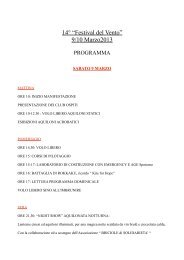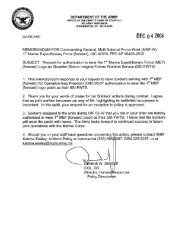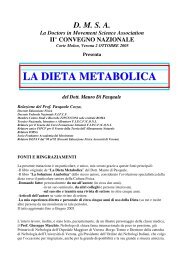Science vs. religion : what scientists really think - File PDF
Science vs. religion : what scientists really think - File PDF
Science vs. religion : what scientists really think - File PDF
You also want an ePaper? Increase the reach of your titles
YUMPU automatically turns print PDFs into web optimized ePapers that Google loves.
76Society and Broader Publics<strong>religion</strong>, so they do not see themselves as adequately skilled to discuss mattersof <strong>religion</strong>. Still another group believes that <strong>religion</strong> is just irrelevant to science.They see no reason why <strong>religion</strong> should ever come up in science classrooms. Aswe saw in Chapter 2 , some have had negative experiences with <strong>religion</strong>. These<strong>scientists</strong> seemed strongly committed to one script, unwilling to entertain otherpossibilities. Further, some <strong>scientists</strong> reside entirely within their scientific plausibilitystructure (see “What Do They Practice?” in Chapter 3 ) and are entirelyunhelpful when students raise issues about faith.We can learn something about the content of <strong>scientists</strong>’ scripts for dealingwith <strong>religion</strong> in university classrooms by returning to the ideas of sociologistBasil Bernstein (discussed in Chapter 2 under “Working Toward Dialogue”).Common codes for dealing with <strong>religion</strong> are often reinforced through sharedsocial relations with other academics who have similar views. In environmentswhere there are a limited number of religious <strong>scientists</strong> who have developedelaborate ways of connecting <strong>religion</strong> and science, even religious <strong>scientists</strong>might contribute to the suppressing of discussions about <strong>religion</strong> simplybecause they lack conversation partners. 7 And many <strong>scientists</strong> who do identifywith traditional forms of <strong>religion</strong>—a large minority of those I surveyed—givein to strong departmental cultures and practice a closeted faith. So althoughtheir faith traditions could potentially provide them with helpful alternatives,these <strong>scientists</strong> use a particular script that suppresses conversations about<strong>religion</strong> on the grounds that personal religious preference is not an appropriatetopic of conversation among colleagues or in the science classroom.Sadly, such constrained scripts are often inadequate for translating science tobelieving students.But there is another group of <strong>scientists</strong> who do want positive engagementwith <strong>religion</strong> in university classrooms. These professors <strong>think</strong> they simply cannotbe effective teachers when they ignore student concerns about <strong>religion</strong>.They want a script for engagement, yet they sometimes lack one because theyknow so little about <strong>religion</strong>. This chapter responds to their dilemma by highlightingthe kinds of scripts some <strong>scientists</strong> (religious or not) have developed todiscuss <strong>religion</strong> in science classrooms.In today’s America, all science teachers must engage <strong>religion</strong>; it’s unavoidable.Some do so by expending effort to suppress discussion of <strong>religion</strong> or tocombat its influence on science. Others give <strong>religion</strong> a wider berth, allowingtheir faith traditions or spiritual sensibilities to influence how they teach.Thirty-nine percent of the <strong>scientists</strong> I surveyed said their religious or spiritualbeliefs influence personal interactions with students or colleagues. This representsa sizable group of <strong>scientists</strong> who see faith as shaping interactions withstudents. For this group, however, bringing <strong>religion</strong> into the classroom is
















